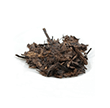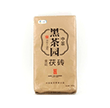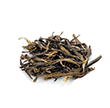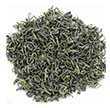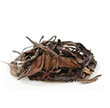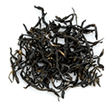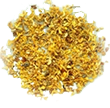2 Secrets of the Tea Masters
Today, I am sharing two advanced techniques of tea-making and why they make your teas taste so much better. The first is a better way to use your teapots and the second is about water temperature.
Tea masters always have a large selection of Chinese Yixing unglazed clay teapots on hand for every kind of tea (including Oolong Tea, Pu-erh Tea, and White Tea). These are the tools of their trade when making tea the traditional Chinese way called Gong Fu Cha (Tea With Great Skill). Each teapot is designed to be used for a specific type of tea. This chart shows the basic guidelines that are generally used by Gong Fu Cha tea-makers.

The different densities and firing temperatures of the clays used to make Yixing teapots regulate heat and oxygen in different ways which are very important factors in tea-making. Even the shapes of the teapots are designed to optimize the different ways tea leaves expand in water. So a lot of consideration goes into the selection of a Yixing teapot. You can get a real Yixing teapot at a Chinese tea shop for around $25.
Yixing teapots also absorb the oils that give tea its bitter taste. Low-fired teapots are thick and porous and are used for strong and robust teas like Black tea and Pu-erh teas. High-fired teapots are finer, denser and less porous and absorb less oils. These are used for more delicate teas like Green tea, White tea and Oolong teas.
For better tasting tea, try this technique. Use a higher-fired teapot for aged teas that have already mellowed like aged Pu-erh teas and aged Oolongs like Wu Yi Shui Xian or 25 Year Old Iron Buddha and any tea made from tips. Many people would like to drink Green teas like Long Jing Dragon Well and Silver Needle but don’t like the grassy, bitter taste. This is largely because they use glass or porcelain teapots. Use a high-fired Yixing teapot for these teas which will make them taste sweet.
Water temperature is another important factor in tea-making. The higher the temperature, the faster the tea leaves dissolve but this gives less control over the brewing time. An advanced technique is to find the lowest water temperature possible for the tea you are making. This chart will give you a good starting point:

*Boiling means when the water has just reached a slow boil with big bubbles.
With a little experimentation using different teapots and water temperatures, you will be able to control your tea brewing with more precision and get the very best taste for each brew. You will be amazed at the results. You will also use less tea and save money which will make you happy.
For complete information on Chinese teapots, see our how-to guide "How To Choose A Chinese Teapot - by Daniel Lui"
 Top of Page
Top of Page

Ask The Tea Wizard
Don't know which tea is right for you? Answer a few questions and the Online Wizard will show you all the Chinese teas that suit your taste.


